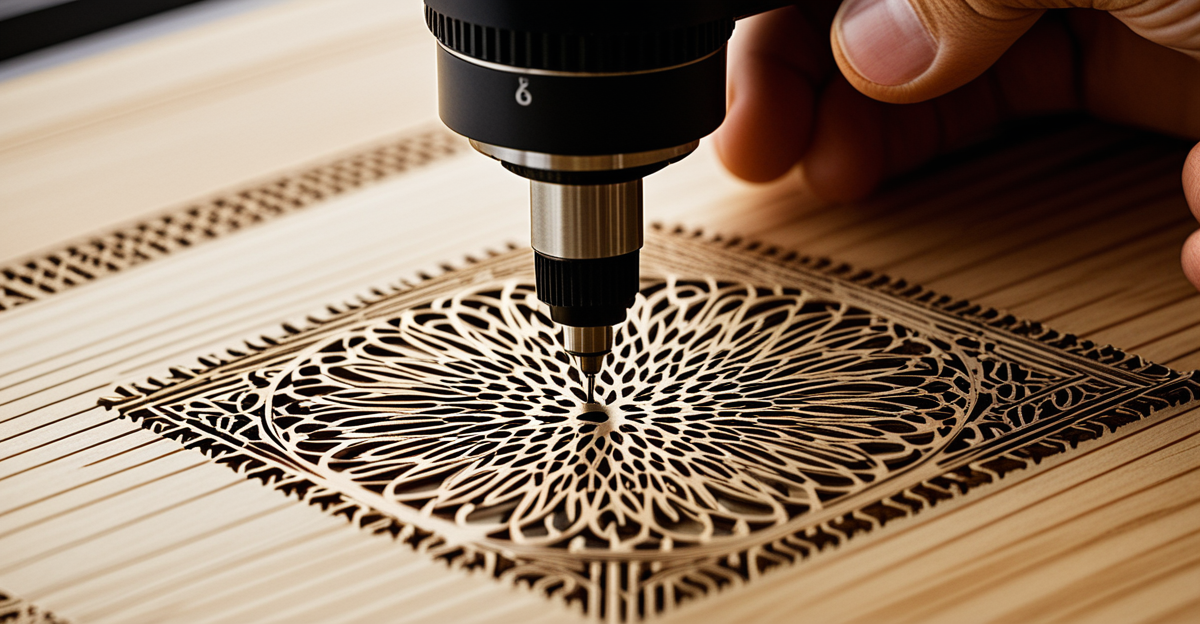Laser engraving transforms everyday objects into personalised masterpieces with precision and ease. Understanding the technology behind laser engravers and selecting the right model unlocks endless creative possibilities across a wide range of materials. This guide highlights key features, practical uses, and essential advice for choosing a laser engraver that fits your needs and sparks your artistic potential.
Essential Guide to Laser Engravers: How They Work, Key Features, and Buying Considerations
Laser engravers use concentrated beams of light to vaporize or mark surfaces with remarkable precision and detail. You can view more details on this page: www.graveur-laser.net. This technology supports an impressive range of materials—wood, metal, glass, acrylic, plastic, and leather all react uniquely to laser power, speed, and focus. CO₂ lasers excel on wood and acrylic; fiber and MOPA lasers dominate metal marking; diode and infrared units elevate plastics and glass projects.
In parallel : Innovative kitchen tools for uk families: uncover time-saving smart solutions!
The primary laser engraving machine types are diode, fiber, CO₂, MOPA, and infrared. Each type offers distinct advantages for different projects: CO₂ lasers are widely used for cutting organic materials; fiber lasers engrave metals and certain plastics with unmatched efficiency; diode lasers suit portable and hobbyist applications; MOPA and IR lasers deliver nuanced results on complex surfaces and color markings.
When selecting a machine, assess device compatibility, workspace size, and portability. Key features like software integration, warranty, and maintenance support should not be overlooked. Look for engraving equipment that includes robust, user-friendly software, reliable after-sales service, and accessible replacement parts for sustained performance.
In parallel : The definitive handbook for soundproofing shared walls in uk flats: enhance your privacy and tranquility!
Comparing Leading Laser Engraver Brands and Models
Precision in laser engraving starts with choosing the right engraving machine for your materials and project size. LaserPecker, OMTech, and xTool provide a wide spectrum of types of engraving machines—diode, fiber, and CO2 models—geared for both hobbyist and commercial laser engraving applications. Understanding the core attributes of each machine makes it easier to weigh the laser cutter vs engraving machine debate. For instance, CO2 lasers found in OMTech and xTool excel at non-metal engraving, while LaserPecker’s dual-laser types cater to users requiring portable solutions for wood, metal, and plastic engraving.
Diving deeper, engraving machine upgrades enable tailoring machines to growing business needs or expanding material lists. Accessories like rotary axes, cooling systems, or upgraded laser modules are vital for commercial engraving uses or precise hobby laser engraving. Software integration elevates every project—LaserPecker’s LDS app, xTool Creative Space, and OMTech’s support for LightBurn/RDWorks allow for comprehensive engraving machine software tutorials and ensure seamless engraving software compatibility, letting users execute advanced designs and optimize settings for each material.
Prioritizing engraving software compatibility and available upgrades transforms a basic system into a robust solution for varied engraving tasks—an essential consideration whether you’re personalizing gifts, managing commercial projects, or starting out in hobby laser engraving.
Applications and Project Possibilities with Laser Engravers
Laser engraving opens up a remarkable range of project possibilities for both creative enthusiasts and small business owners. If you’re exploring wood engraving techniques, laser engravers enable exceptional precision when designing bespoke signs, picture frames, or décor. Wood engraving techniques also let users achieve layered textures and intricate patterns, providing additional value in the personalized gifts and decor markets.
For metal marking with laser technology, modern engravers offer the accuracy needed for branding tools, promotional products, and jewelry. When engraving on aluminum, you can expect fine detail on both flat and curved surfaces—making it ideal for nameplates, business gifts, and custom electronic enclosures. These applications highlight why metal marking with laser technology is essential for both hobby and commercial use.
Customizing gifts with engraving boosts client satisfaction by personalizing items such as pens, jewelry boxes, and awards. Engraving small objects like keychains or USB drives demands precise engraving on compact surfaces, which laser machines handle efficiently. For entrepreneurs, engraving business startup tips include starting with popular items—engraving promotional products or signage—then expanding as your inventory and skills grow.
Versatile machines also support engraving custom signage, combining wood engraving techniques with metal marking with laser technology for business logos, office plaques, or event signage. Leveraging these engraving business startup tips can maximize your return on investment while delivering unique, high-quality results.
Practical Advice: Safety, Maintenance, and User Support for Laser Engraving
Adhering to essential laser machine safety tips protects both users and workspaces. Always wear safety glasses rated for your laser type to prevent eye injury. Establish a well-ventilated area when operating engraving machines, especially with materials like acrylic or leather that can emit fumes. Use flame-retardant surfaces and have a fire extinguisher nearby as part of fundamental safety equipment for laser use. Never leave a running machine unattended.
Effective engraving machine maintenance extends equipment lifespan and output precision. Regularly clean engraved surfaces using lint-free cloths or recommended cleaning wipes to avoid residue buildup. Remove dust from lenses and check ventilation paths each week, ensuring consistent engraving speed and performance. Periodically inspect for worn belts, wheels, or misaligned mirrors, as prompt replacement parts for engraving machines can prevent costly downtime.
For persistent challenges, focus on troubleshooting common issues, such as inconsistent engraving depth, unexpected shutdowns, or software errors. Consult the manufacturer’s troubleshooting guides or attend laser engraving workshops and training sessions—these resources boost skill development. Many providers also supply live support, FAQs, and warranty coverage, combining user guidance with peace of mind for long-term use.



